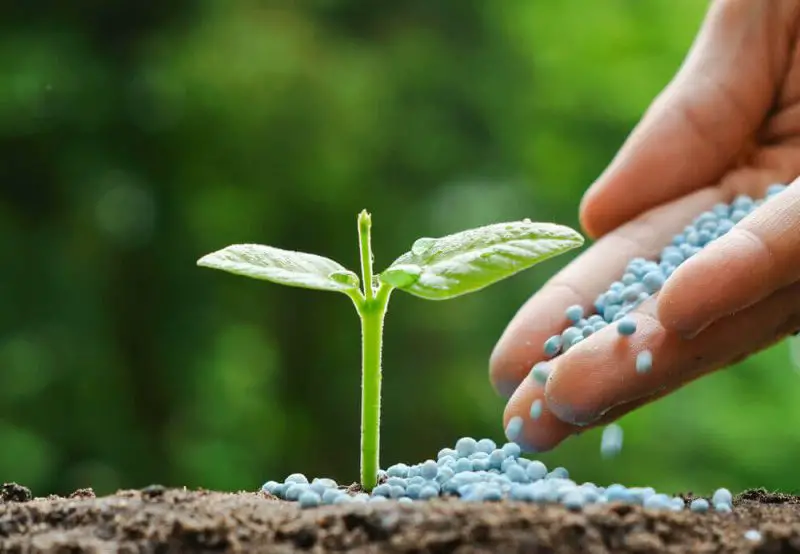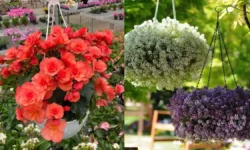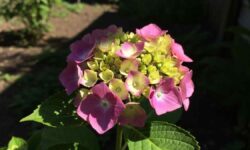Fertilizers play a critical role in healthy plant growth and agricultural productivity. Among the many formulations available, 30-0-8 fertilizer is a specialized type that often raises questions from gardeners and lawn care enthusiasts alike. Understanding what 30-0-8 fertilizer is used for and the best time to apply it can transform the way you nurture your lawn or garden, ensuring optimal results and healthier plants.
In this article, we will explore in depth the characteristics, uses, and application timing of 30-0-8 fertilizer, helping you make informed decisions for your green spaces.
Table of Contents
Understanding 30-0-8 Fertilizer: Composition and Basics

The numbers in fertilizer labels represent the percentage by weight of three key nutrients: nitrogen (N), phosphorus (P), and potassium (K), often referred to as the N-P-K ratio. In 30-0-8 fertilizer, the ratio means the fertilizer contains 30% nitrogen, 0% phosphorus, and 8% potassium.
Nitrogen is a vital nutrient for plants, primarily responsible for promoting vigorous leaf and stem growth. It supports the development of lush, green foliage, making it especially important for lawns, leafy vegetables, and other plants where leaf production is the priority.
Phosphorus, the second number in the ratio, is absent in 30-0-8. Phosphorus is usually crucial for root development, flowering, and fruiting, but the zero percentage indicates this fertilizer does not supply phosphorus.
Potassium, the third nutrient in the ratio at 8%, contributes to the overall health and disease resistance of plants. It strengthens roots, improves drought tolerance, and enhances the quality of fruits and flowers.
With this composition, 30-0-8 fertilizer is nitrogen-rich with some potassium, but no phosphorus. This specific balance suits certain types of plants and soil conditions where phosphorus levels are sufficient or intentionally limited.
What Is 30-0-8 Fertilizer Used for?
Ideal Use in Lawn Care
The primary use of 30-0-8 fertilizer is in lawn maintenance. Lawns demand high nitrogen content to maintain their vibrant green color and dense growth. The 30% nitrogen content in this fertilizer provides an immediate nutrient boost that encourages rapid leaf development and thick turf.
Potassium at 8% supports root strength and resilience, helping grass withstand stress from drought, temperature fluctuations, and diseases. The absence of phosphorus makes it a safe choice for lawns in areas where phosphorus runoff may pose environmental concerns, such as near water bodies or where soil tests indicate sufficient phosphorus.
This fertilizer type is especially beneficial for established lawns that already have a healthy root system and do not require additional phosphorus. It helps in greening up the lawn quickly after dormancy periods or during the growing season.
Application for Certain Crops and Gardens
Besides lawns, 30-0-8 fertilizer is used in some vegetable gardens and ornamental plantings where nitrogen demand is high and phosphorus addition is unnecessary or unwanted. Leafy vegetables like spinach, lettuce, and kale benefit from high nitrogen levels that promote leaf growth.
Some flowering plants and shrubs also appreciate the potassium boost for stronger stems and enhanced flowering capacity. However, it is essential to consider the phosphorus status of your soil because these plants also need phosphorus during root development and flowering stages.
Environmental Considerations
In some regions, regulations restrict or discourage the use of phosphorus-containing fertilizers to prevent water pollution. Since 30-0-8 fertilizer contains no phosphorus, it aligns well with these environmental guidelines, making it a responsible choice for gardeners and landscapers aiming to reduce nutrient runoff.
Moreover, applying a fertilizer with a balanced nutrient profile according to soil needs helps prevent over-fertilization, which can damage plants and contaminate the environment. This is why soil testing before application is highly recommended.
When to Apply 30-0-8 Fertilizer for Best Results
Understanding Plant Growth Cycles
Timing fertilizer application is as crucial as choosing the right formulation. Plants have different nutrient needs depending on their growth stage and the season. For fertilizers like 30-0-8, which are high in nitrogen, it is important to apply when plants are actively growing and can effectively use the nutrients.
For lawns, the best time to apply 30-0-8 fertilizer is typically in the early spring and early fall. In early spring, the fertilizer jump-starts grass growth after winter dormancy, encouraging strong leaf development. Early fall application helps the lawn recover from summer stress and prepares it for the cooler months ahead.
Applying this fertilizer during periods of active growth ensures that nitrogen is absorbed and utilized rather than being lost to runoff or volatilization.
Avoiding Application in Dormant Periods or Heat Stress
Using 30-0-8 fertilizer during dormant seasons or peak summer heat can be ineffective or even harmful. During dormancy, plants are not actively growing and do not require high nitrogen input, so fertilizer applied at this time may leach away and contribute to pollution.
Similarly, applying high-nitrogen fertilizer during hot, dry periods can stress plants, as nitrogen encourages growth that the plant cannot sustain without adequate water. This can lead to weakened root systems and increased susceptibility to pests and diseases.
Soil Testing and Adjusting Application Timing
Before applying 30-0-8 fertilizer, conducting a soil test is highly recommended. This test provides valuable information about existing nutrient levels, soil pH, and organic matter content.
If soil phosphorus levels are low, using a fertilizer without phosphorus like 30-0-8 may not be the best choice. Conversely, if phosphorus is adequate or high, 30-0-8 can supply the needed nitrogen and potassium without adding excess phosphorus.
The soil test can also help determine the exact amount and frequency of fertilizer application, reducing waste and environmental impact while optimizing plant health.
How to Apply 30-0-8 Fertilizer Correctly
Preparation and Application Method
Applying 30-0-8 fertilizer correctly is essential to maximize its benefits. Before spreading the fertilizer, mow the lawn or prepare the soil bed to ensure even coverage.
Use a broadcast spreader or drop spreader for lawns to distribute the fertilizer uniformly. Uneven application can cause patches of over-fertilization or nutrient deficiency, affecting the appearance and health of the lawn.
For garden beds, incorporate the fertilizer lightly into the topsoil to enhance nutrient availability to plant roots.
Watering After Application
Watering the lawn or garden soon after fertilization helps dissolve the fertilizer granules and transports nutrients into the soil where roots can absorb them. This step reduces the risk of fertilizer burn, especially with high-nitrogen formulas like 30-0-8.
Ensure sufficient watering, but avoid overwatering that might cause nutrient leaching away from the root zone.
Frequency of Application
Because of the high nitrogen content, 30-0-8 fertilizer is generally applied sparingly to avoid excessive nitrogen buildup, which can lead to rapid but weak growth and increased disease susceptibility.
Most lawn care experts recommend applying this fertilizer two to three times per growing season, adjusting frequency based on grass type, climate, and soil fertility.
For garden plants, applications should align with growth phases, typically more frequent during active leaf growth periods and reduced as plants approach flowering or fruiting stages.
Benefits and Limitations of Using 30-0-8 Fertilizer
Advantages for Lawns and Plants
The high nitrogen level in 30-0-8 fertilizer makes it highly effective for promoting lush, green foliage and rapid growth. The added potassium enhances root health and overall plant resilience against environmental stressors.
Since it contains no phosphorus, it reduces the risk of nutrient runoff contributing to water pollution. This makes it a preferred option in sensitive environments and for gardeners practicing sustainable lawn care.
Potential Drawbacks to Consider
One limitation of 30-0-8 fertilizer is its lack of phosphorus, which is important for root development and flowering. If your plants or soil require phosphorus, relying solely on this fertilizer might result in nutrient deficiencies affecting plant performance.
Additionally, high nitrogen fertilizers can cause excessive top growth at the expense of root development if not applied properly or in balanced amounts.
Overuse can lead to thatch buildup in lawns or increased pest and disease issues.
Therefore, a holistic approach that includes soil testing and understanding plant needs is essential when incorporating 30-0-8 fertilizer into your fertilization program.
Environmental and Safety Considerations
Applying fertilizers responsibly is crucial for environmental protection and personal safety. Using 30-0-8 fertilizer in appropriate amounts helps prevent nutrient runoff that contaminates waterways and harms aquatic life.
Always follow the manufacturer’s guidelines and local regulations for fertilizer use. Store fertilizer in a dry, secure place away from children and pets.
Wear gloves and avoid inhaling dust when handling fertilizers to protect your health.
FAQs about 30-0-8 Fertilizer
What does 30-0-8 fertilizer mean?
30-0-8 fertilizer contains 30% nitrogen, 0% phosphorus, and 8% potassium. This high-nitrogen formula is designed to promote lush green growth while potassium improves root strength and overall plant health.
Is 30-0-8 fertilizer good for all plants?
It is ideal for lawns and leafy plants that need nitrogen for dense foliage. However, it is not suitable for plants that require phosphorus for root or flower development unless the soil already has enough phosphorus.
When is the best time to apply 30-0-8 fertilizer?
The best time is during active growth seasons, typically early spring and early fall for lawns. Avoid applying during dormancy or extreme heat, as plants may not efficiently absorb nutrients.
Can I use 30-0-8 fertilizer in vegetable gardens?
Yes, but it is best suited for leafy vegetables like spinach and lettuce. Fruiting or flowering vegetables may need a fertilizer with some phosphorus for proper flower and fruit development.
How often should I apply 30-0-8 fertilizer?
For lawns, applying two to three times per growing season is recommended. Frequency depends on soil fertility, plant type, and growth conditions, so soil testing is highly advised.
Conclusion
30-0-8 fertilizer is a specialized, nitrogen-rich formula with added potassium and no phosphorus, making it ideal for lawns and certain plants where phosphorus is not needed or should be limited. Its use promotes vigorous green growth and strengthens plant resilience, especially when applied at the right times.
Understanding what 30-0-8 fertilizer is used for and when to apply it properly ensures that your plants receive the nutrients they need without environmental harm or wasted resources. Always base your fertilization plan on soil testing and plant requirements, apply the fertilizer evenly and at recommended frequencies, and water properly after application.
By following these guidelines, you can achieve healthier lawns and gardens, improve plant vitality, and contribute to sustainable gardening practices.






